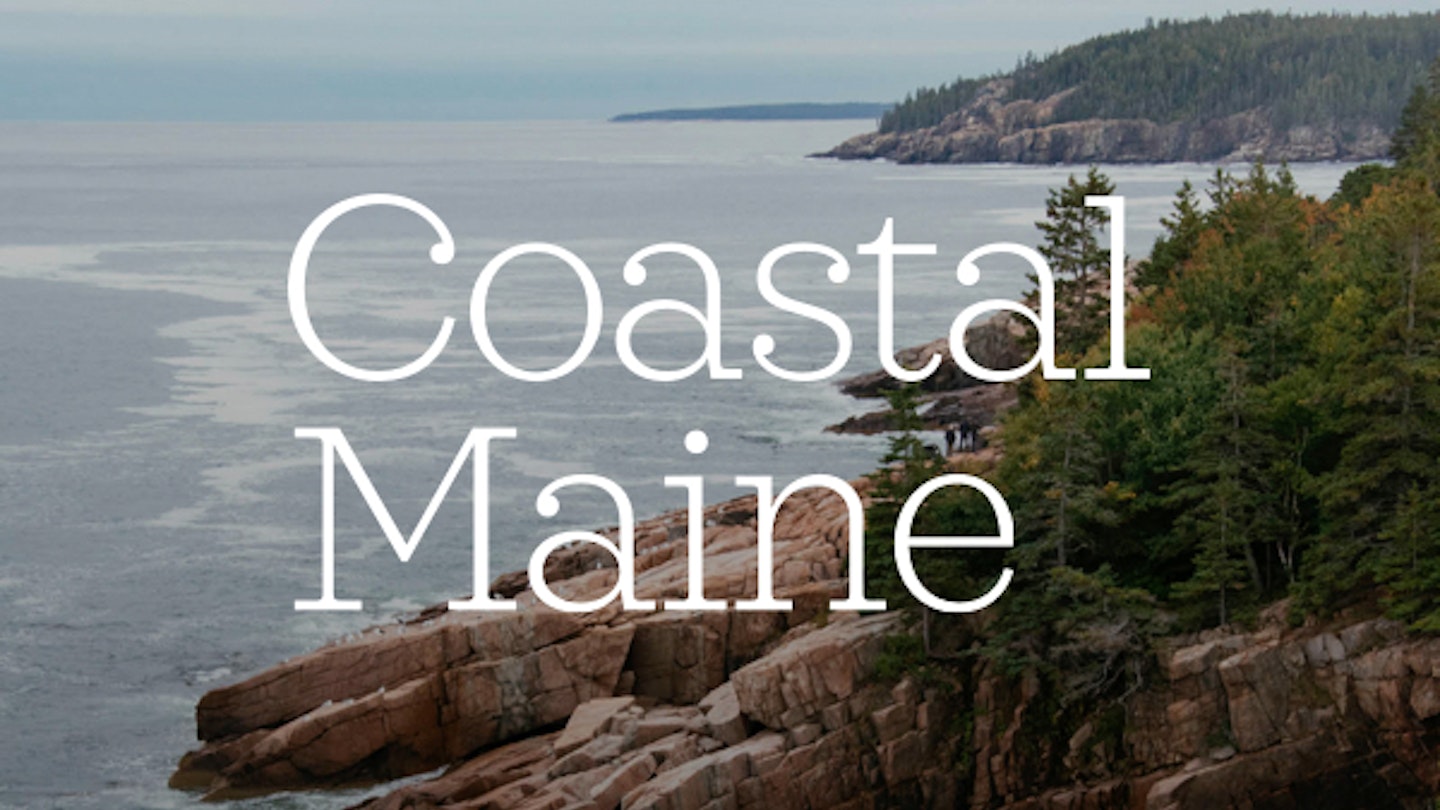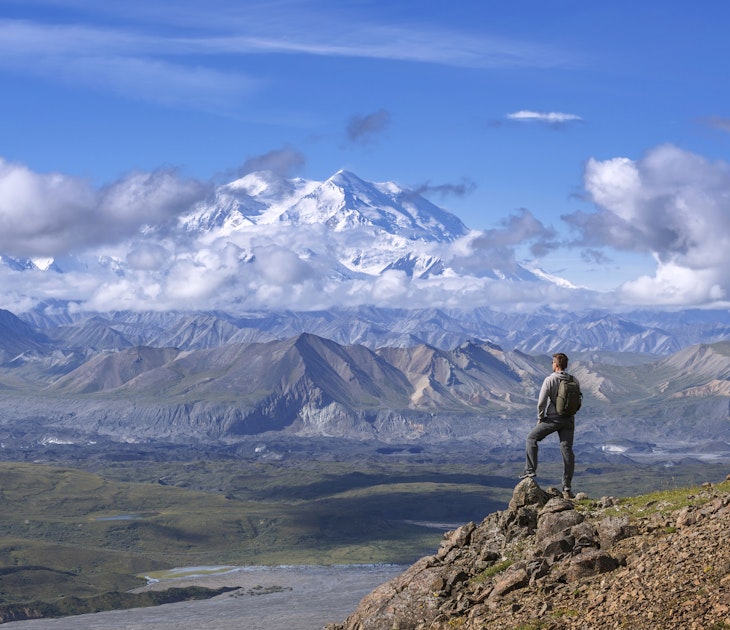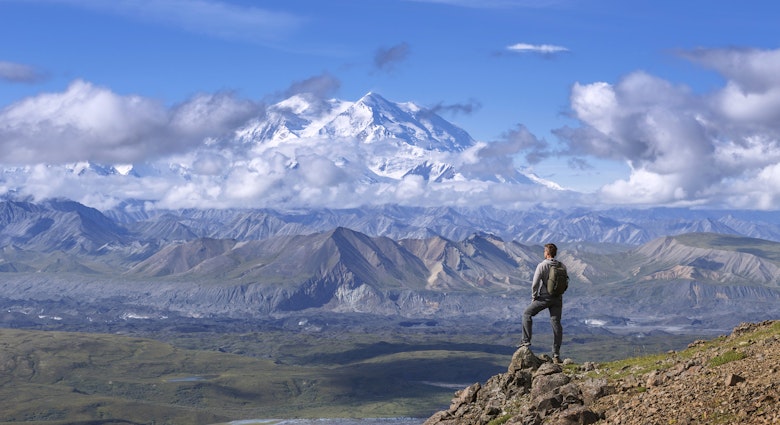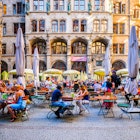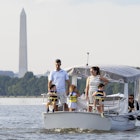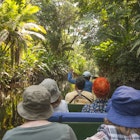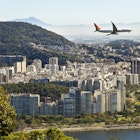Ease into the slow pace of sea-swept Maine, at the USA’s northeastern tip: begin with Portland’s food scene, head north to Rockland, with its world-class museums, and sail around Penobscot Bay. Finally, lace your boots for walks in Acadia National Park.
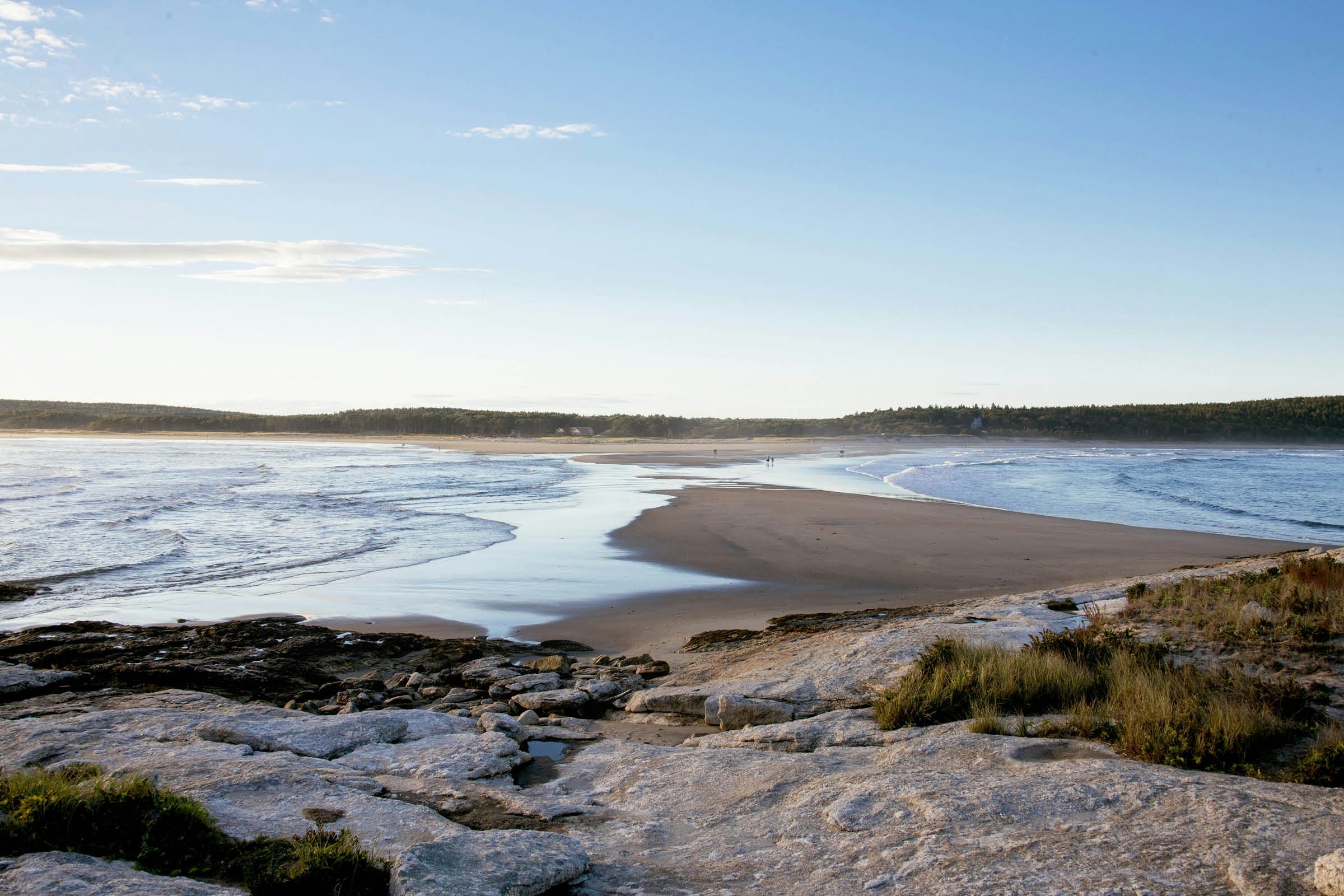
Step One: Eat your way through welcoming Portland, from seafood landed at the historic waterfront to farm-to-table feasts
At 5pm in Portland, everyone is contemplating the most important decision of the day: where to eat dinner. In a city with more than 250 locally owned restaurants, it’s not an easy choice to make. At the edge of Casco Bay, Portland is the most populous city in a state with 3,480 coastal miles. Here, farms are being started at four times the national average rate, and Maine has one of the nation’s highest ratios of organic farms to conventional ones. Good food is important here, and a favoured topic of conversation with locals.
Some prefer the classics, such as New England clam chowder at Gilbert’s Chowder House or fresh Casco Bay oysters at Eventide. Others rave about the city’s Asian-influenced dishes, like the rich broth ramen bowls at Pai Men Miyake, savoury wontons and wok-fried noodles at The Honey Paw, or handmade steamed dumplings at Empire Chinese Kitchen. City-dwellers craving a taste of the countryside rave about Fore Street’s turnspit-roasted pork loin, served with sauerkraut, and cheese plates that highlight Maine’s small dairy farms, served with quince paste and apricot preserves at Sur Lie. Everyone has a different favourite – and everyone is certain theirs is the best.
In the cobblestoned Old Port District, inside the Press Hotel, Union is known for its artful focus on local foods, the restaurant’s name a reference to its cherished collaboration with New England’s farmers and producers. The kitchen is wide open, so guests at the marble-topped bar can talk to executive chef Josh Berry as he prepares dishes. The bowls lined up contain foraged mushrooms, such as chicken-of-the-woods and maitake, as well as pears and sorrel: a handful of the local bounty that will go into tonight’s dishes. Josh sends out a plate that has the season’s last rocket salad on it. ‘This dish will never be served again,’ he says. ‘That’s the beauty of eating seasonally.’ Then he offers up a piece of honeycomb dripping with honey. ‘We have bees on the roof,’ he says, proudly. ‘We’re the first restaurant in Portland to do that.’
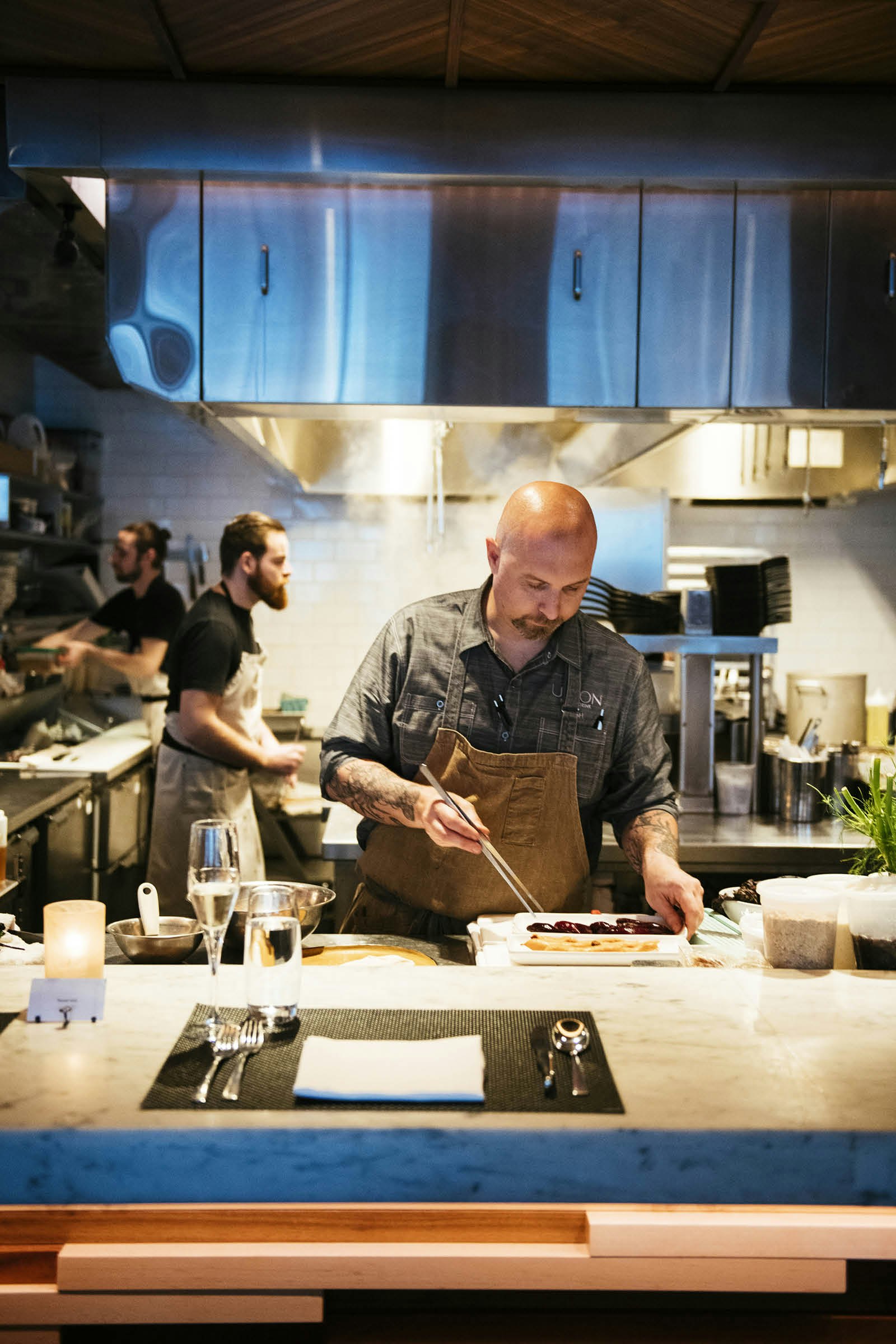
His rolled-up sleeves reveal tattoos of lobsters and clams. Born and raised in Maine, he says he appreciates the honest connection the fishermen have with chefs and with the people they feed. He sends me a plate of squash stuffed with brussels sprouts and walnuts in a ponzu sauce, surrounded by tender scallops harvested just offshore. The unlikely combination is rich and profound, with a little sour wildness on the tongue from the fresh sorrel garnish. ‘My job is to challenge your taste buds with each bite,’ says Josh.
The restaurant relies on the historic Harbor Fish Market for in-season seafood. It sits among a row of wharfs jutting out into the bay. With its faded red clapboard siding, it has been the site of a fish market since the late 1800s and is now a local landmark, owned by the same family since 1966. A lobster boat named Providence, with a sea-foam-green stripe along the side, throttles right up to the dock to unload its catch, which is then carried to the cold aerated ocean-water tanks. ‘It’s all about quality and freshness,’ says Mike Alfiero, one of the market’s owners, who carries on his father’s business with his brother Nick. ‘We don’t sell anything that we wouldn’t take home and serve to our own family.’
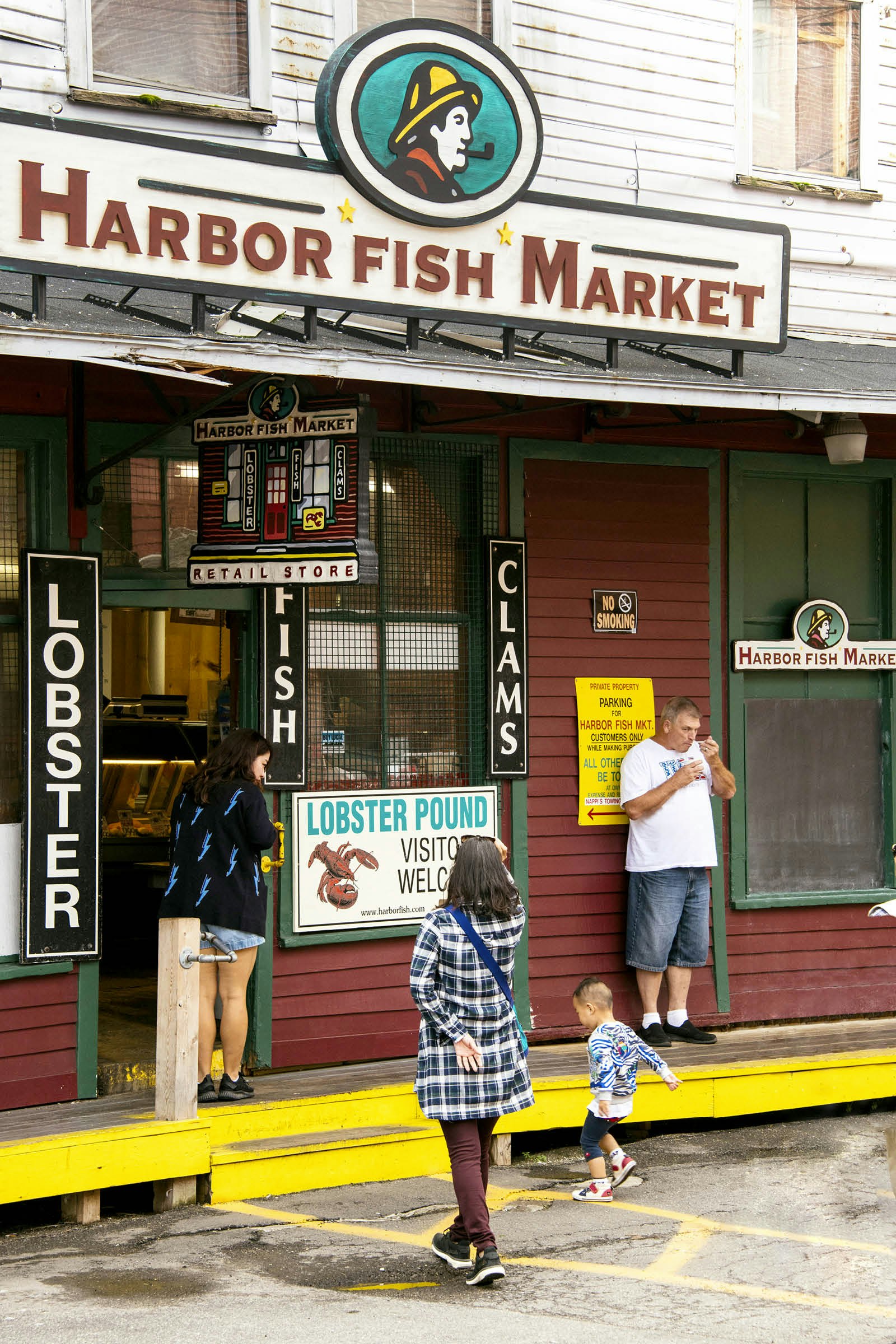
Piled up on the ice is everything from snapper to swordfish, haddock to halibut, as well as an assortment of mussels and clams. The air inside is cold and clean, the lobster tank is bubbling, and customers are shouting their orders to the personnel. The Alfiero brothers pride themselves on sustainability, and being seafood provider of choice for many of Portland’s top restaurants.
One of those, Eventide, comes to life just as the market is closing its doors for the day. Despite the brisk breeze coming in off the sea, a crowd is forming outside the door. It’s difficult to get a table but people don’t seem to mind the wait. Here, the talked-about dish is a vivid twist on the standard lobster roll, served with a brown butter vinaigrette on a Chinese-style steamed bun. It’s a perfect coming-together of melt-in-your-mouth flavours, and a perfect symbol of the way Portland blends a love for heritage with an outward-looking attitude.
Stay In the Old Port district, the Press Hotel is housed in the historic brick and stone building that held the offices and printing plant of the Portland Press Herald until 2010. With vintage-style journalists’ desks and leather chairs, the 110 guest rooms take inspiration from the 1920s newsroom, and have large windows that open to let in fresh sea air.
Tour Fancy learning about Portland’s historic wharves while eating seafood chowder or pizza at David’s, and being whisked around tastings with top chefs, chocolatiers and craft brewers? Year-round culinary walking tours of Portland, and seasonal outings to Bar Harbor and Rockland run by Maine Foodie Tours are a fun and filling way to see the region and meet some of the faces behind the celebrated food scene.
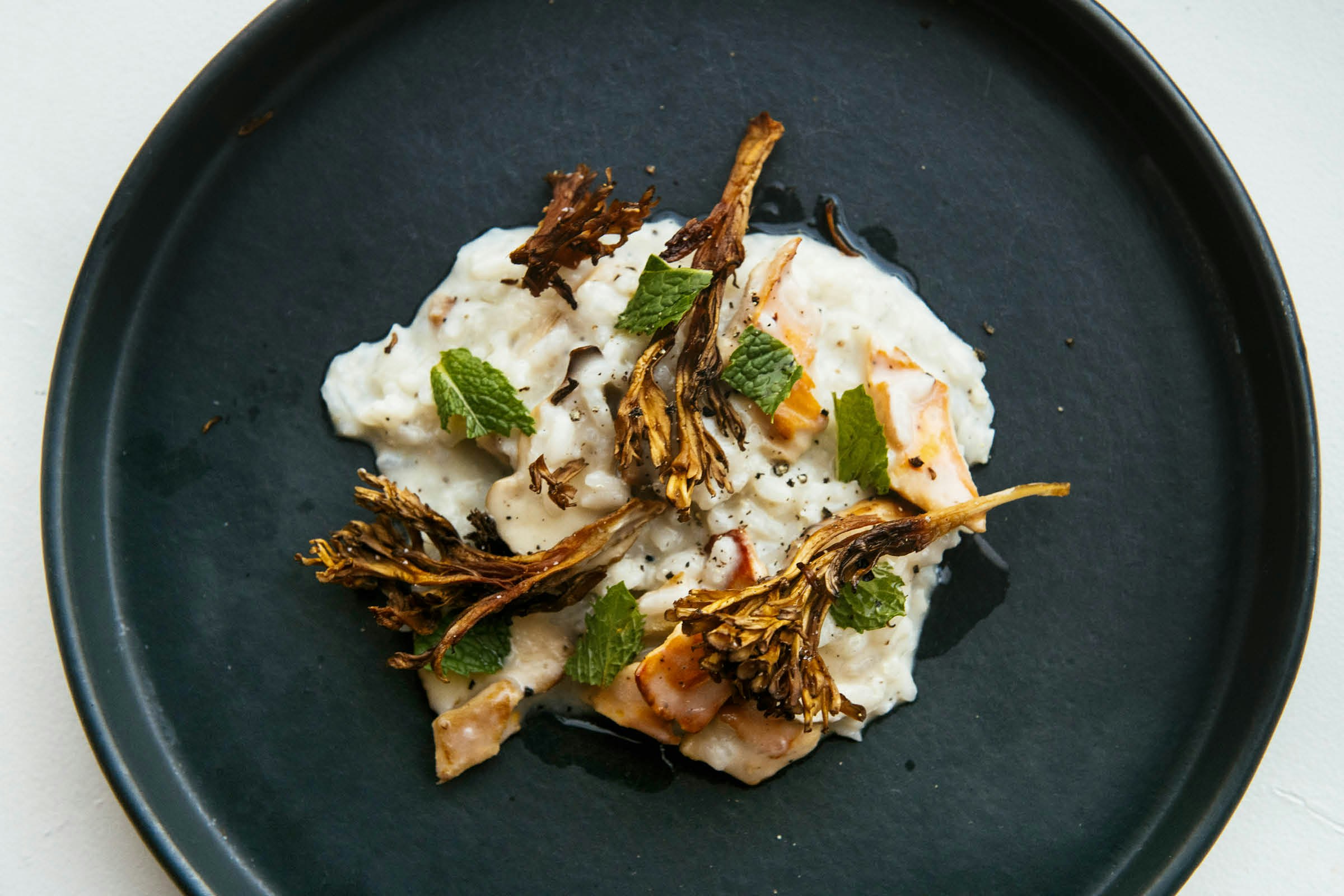
Step Two: Take an art-focused tour of Rockland, a buzzing city with museums and galleries that belie its remote locale and small size
On the wall of the Farnsworth Museum in downtown Rockland, a painting depicts a young artist with his easel propped on the rocks of a seashore. The incoming waves plume up from the rocks, threatening to drench the painter’s canvas. In front of his easel, only feet away, white water surges and churns into a pool. The artist reaches out his arm to dab paint onto his scene.
The work, Portrait of a Young Artist (1936), by the renowned American artist NC Wyeth, is of his son Andrew, who himself became an influential figure in American painting. The Wyeths were among a slew of US artists who looked to Maine’s rugged coastline and its outlying islands as a subject of infinite interest. ‘The artists’ sensitivity gives you a whole new way of looking at this place,’ says JC Dewing, who wears striped shirt, braces and a fisherman’s moustache, and greets visitors at the front desk. ‘Rockland was once a fishing town, but it’s becoming an arts town. This was the vision of Lucy Farnsworth in the 1920s, and it has come to bear.’

Lucy Farnsworth was the child of a wealthy industrial investor, and donated most of her generous inheritance to establish the museum, which now has some 15,000 works in its collection. Around such a collection, a community of artists has grown up. The art at the Farnsworth casts a certain light on the surroundings, the timelessness and moodiness of the sea, the drama of the windswept land.
A block away stands the Center for Maine Contemporary Art, where muted afternoon light seeps in via floor-to-ceiling windows. On exhibit are steel sculptures made from forged and welded nails, a collection of still-life and portrait photographs, and a life-size, walk-in installation of an artist’s studio that has been turned upside down by a roiling flood. What began in 1952 as an artists’ cooperative, presenting exhibits in barns and back rooms, is now the state’s preeminent contemporary arts organisation.

More than 20 galleries smatter this quaint, quiet town that edges the shore. A local food co-op, an independent bookshop, coffee shops, diners and cafés punctuate the relaxed streets with activity. Amateurs are learning to paint at the Art Loft, close to where a ferry scoots out into the bay, carrying passengers to Vinalhaven Island. The community art centre offers classes to members and drop-ins who want to try their hand at figure drawing, mixed media collage, landscape painting and watercolours.
A short way along the mouth of the St Georges River, past farm stands selling pumpkins, and apples falling in piles from roadside trees, past split-rail fences and blooming woodland sunflowers, lies the Olson House. A 1700s saltwater farmhouse, this is where Andrew Wyeth painted and sought inspiration for nearly three decades, and it’s now a small outpost of the Farnsworth museum.
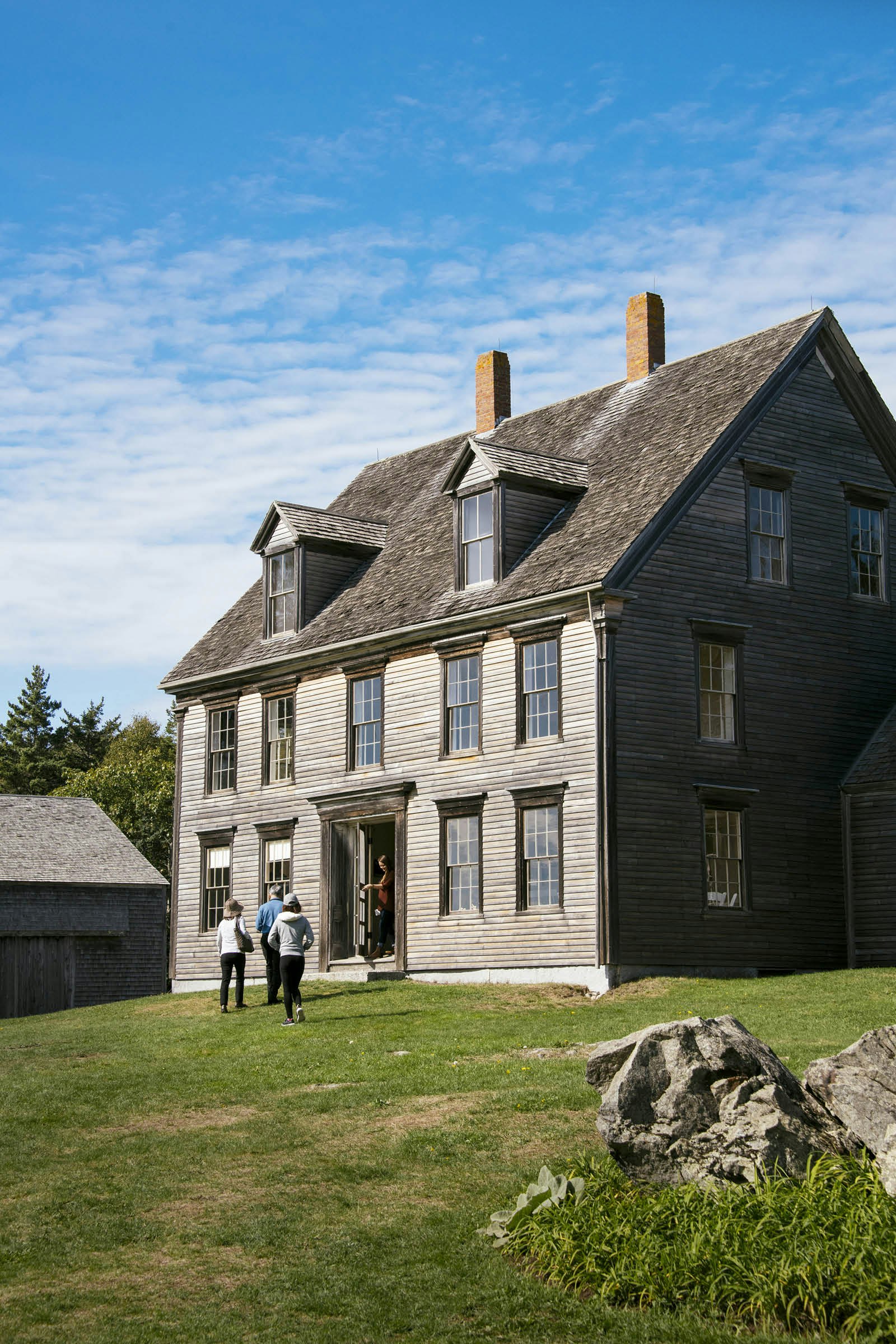
Gold-tinged light streams into the 14 empty rooms, many of which are depicted in Wyeth’s works. There is something of the salt air in the old boards. From the window of a third-storey bedroom, the view opens beyond the tall spruces, to the river pouring into the Muscongus Bay of the Atlantic Ocean. Here, ensconced in the peace of the wooden house, the ocean a pool of bright shimmer in the eyes, it’s easy to feel the tug that has held artists in thrall for centuries.
Stay Overlooking Rockland harbour, and well placed for exploring the town on foot, the boutique 250 Main Hotel has a lounge where guests can relax on mid-century couches and chairs, and take in museum-quality artworks by contemporary regional artists or read books on Maine while basking in front of an elevated fire. Its 26 rooms feature reclaimed vintage decor and views of the harbour.
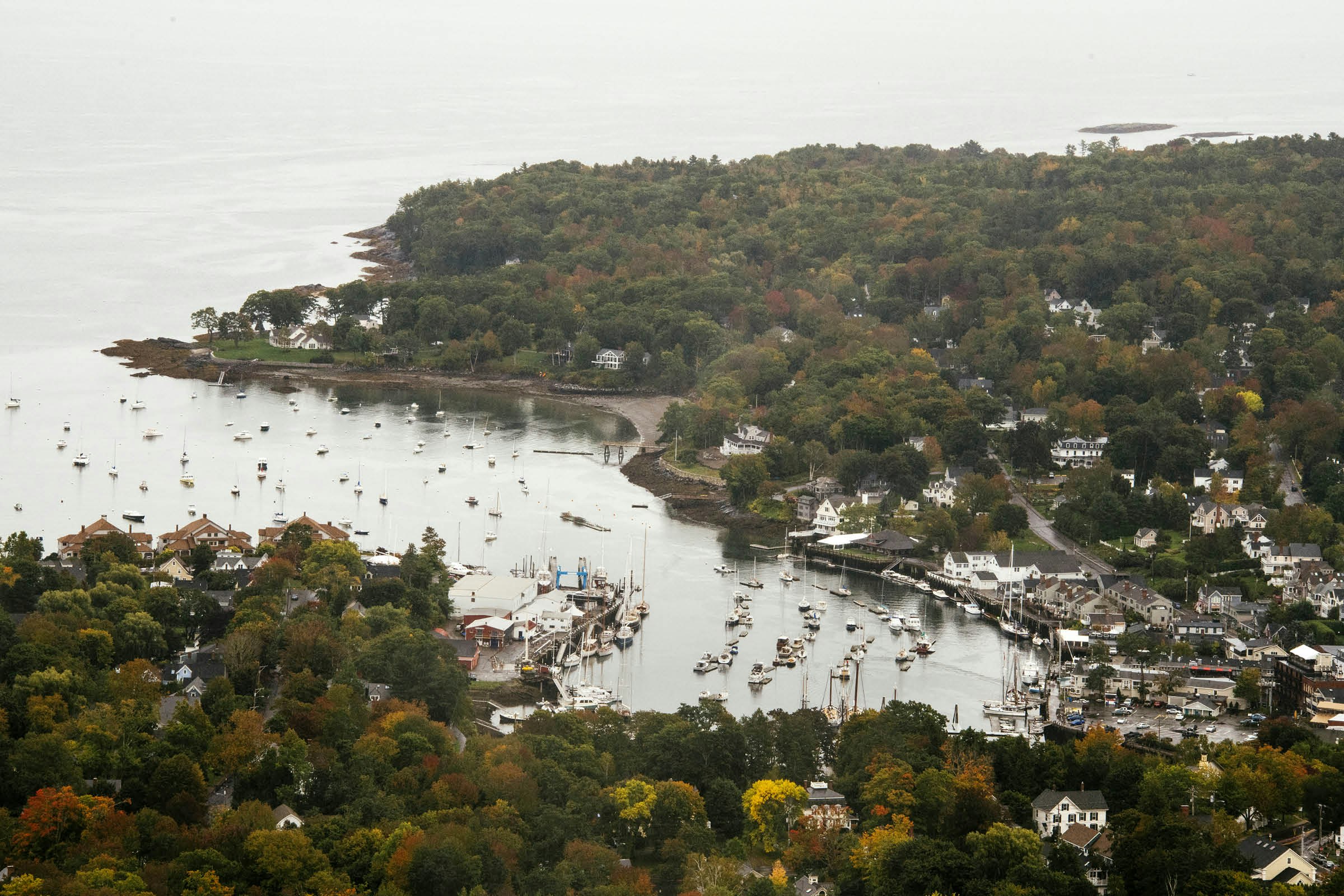
Step Three: The coastal town of Camden is a picturesque place to board a classic wooden schooner for a short seafaring adventure
The little town of Camden sits at the mouth of the Megunticook River, on Penobscot Bay. The bay is named for the people who inhabited the area for the 11,000-odd years before white settlers arrived in Maine. In their language, the river’s name means ‘great swells of the sea’, referring not to the ocean it pours into in Camden, but to the rolling hills that the river drains. Rising above the bay, these hills are among the tallest coastal peaks along the North Atlantic seaboard.
Down below, Camden’s harbour is packed with sailboats of all sorts: cutters and sloops, schooners and catboats, ketches and yawls. Their masts stand high in the air, their slack ropes slice the cloudless blue sky, hulls gently rock at anchor. On a century-old wooden schooner called the Surprise, captain Will Gordon and his first mate, Laird Kopp, greet passengers as they board. Soon, the boat is motoring out, Laird coiling the stern line with his hands and steering the helm with his boot. When he was eleven years old, Laird and his family visited the area on holiday and took a ride on a historical wooden schooner. ‘I fell in love – with the big schooner’s lines and rigging, with the huge sails, the wind and the waves,’ he says. ‘With the raw beauty of the mountains and sea.’

Many years later, he came back to the area, was introduced to a schooner crew and spent a summer with them learning as much as he could. Now, he is a first mate and part of what he calls ‘this neat community of sailors and boaters’. Out on open water, he yanks at ropes to hoist the sails up the ship’s original Douglas fir masts. The sails flap exuberantly and catch the wind. As the boat heads east toward Mark Island, Laird retrieves a journal from below deck. It is the sailing log that May Kattenhorn, wife of the first owner, kept in the summer of 1934. Inside she pasted colourful postcards and wrote long entries about their days at sea. Her angular cursive is scrawled across the pages: ‘Low lying coast hills an inky black… bold rocky coast of Maine… beautiful pine clad shoreline… lovely Camden Hills showing blue in the distance.’
I look back towards shore. The view she described is little changed. The wind is strong and brisk, pushing the boat further out to sea over the choppy waves. Bright sun lights the ocean’s surface; it fragments into a thousand shimmers. The rhythms of the sails billowing, of water slapping the wooden hull of the ship, send the mind into a welcome lull. With easy sailing, time spools gently out.

The captain tacks south of Curtis Island and its lighthouse, where the sun is setting behind the lighthouse keeper’s cottage. We skirt the island, pushing back toward shore. Those same hills that May Kattenhorn wrote about during the summer of 1934, the hills the Penobscot called the great swells of the sea, are sloping above, framing the harbour as the crew brings the Surprise nearer the shore. ‘This is among my favourite approaches to a harbour in the world,’ Laird says. The soft blue lines of the hills curve downward and draw us in.
Stay Waking up in a nautically themed cottage-style room at the Island View Inn, guests can grab binoculars and head to the private balcony to watch sailboats appear on the glassy waters of Penobscot Bay. Amid 23 acres of gardens and grounds, with walking paths leading to the ocean, and a heated outdoor infinity pool, the inn is a destination in itself. Book well ahead.
Step Four: New England’s Acadia National Park offers peerless beauty and diverse terrain for walkers, from seaside to mountain
It is a rainy morning in Bar Harbor. The cosy town is the gateway to Acadia National Park, which covers half of Mount Desert Island, the biggest of the barrier islands off Maine’s coast. Across Frenchman Bay, more isles – rounded, spruce-covered – rise up, their forested silhouettes like the backs of porcupines. Among them is Bar Island, lying ahead on the horizon.
In the many cafés that dot the streets of Bar Harbor, people are waiting as the tide goes out. Sitting beside glowing fireplaces, they patiently sip coffee, or impatiently pace back and forth by the windows. Little by little, the tide recedes until a narrow sandbar between the two islands is revealed. Suddenly, a flurry of activity, as people wrapped in raincoats and clutching umbrellas step out into the pattering rain.
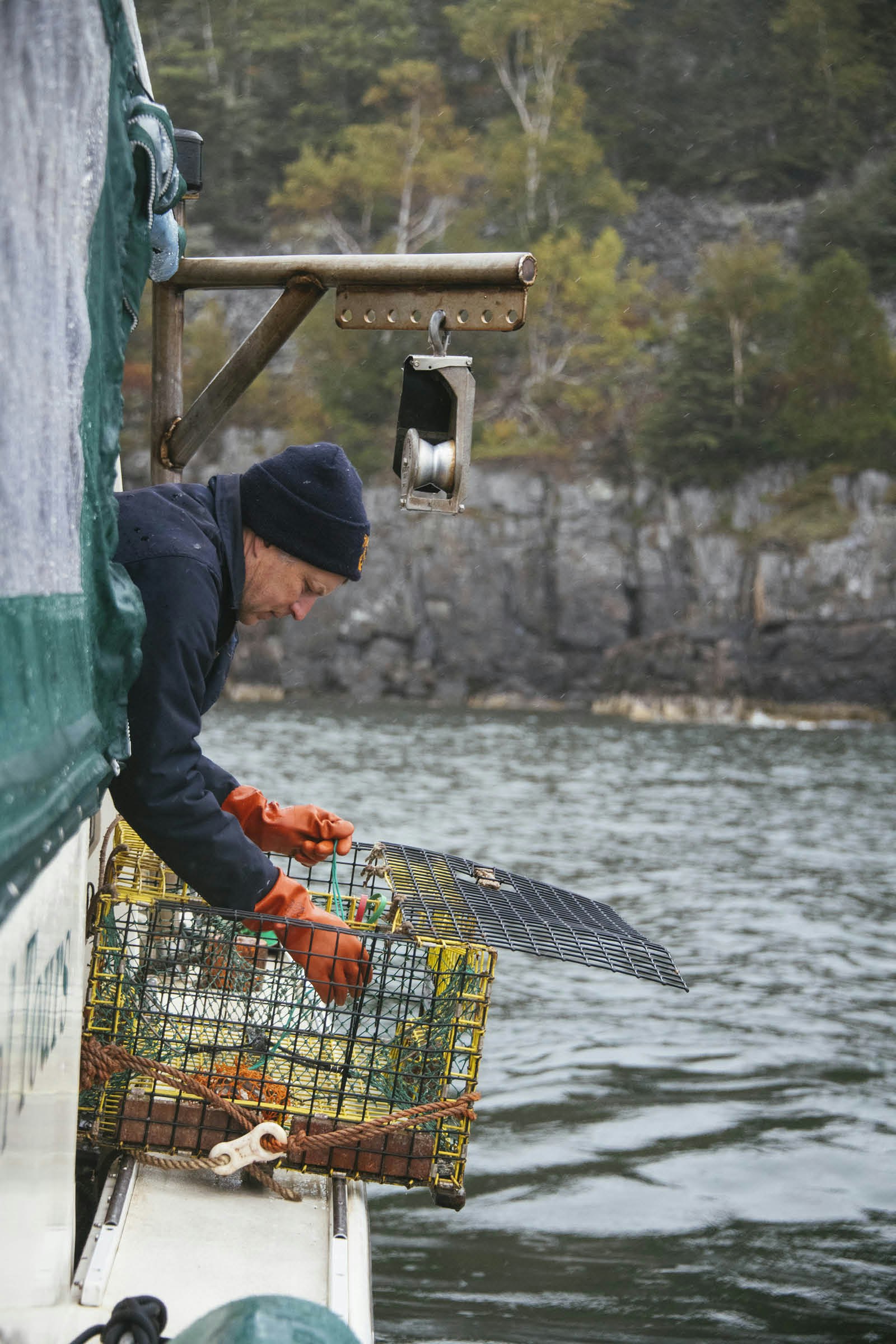
There’s only one time of day to make the hike to the uninhabited Bar Island, and that’s the few hours when the tide is out. Then, people stream across the shell-littered sand bar, a strip of solid earth that has appeared as if by miracle and will soon be swallowed again by the waves. The pilgrims who cross have an air of elation and purpose.
And the island that awaits is no small reward. The soft trail winds through a hushed cathedral of spruce and white pine that gives shelter from the rain. Deer huddle in the trees, their ears pricked, turning their graceful heads to look. In only a mile, the trail reaches the highest point on the island, with its sweeping view of Bar Harbor and the rest of the park and its ranging mountains. And then it’s back down, while there’s still time to cross the sand bar.
During high tide, there are other trails to explore. On the Great Meadow Trail that leads visitors from downtown Bar Harbor into the park, naturalist Karen Zimmerman lingers along the edge of a meadow. She points out where beavers have dammed a creek, turning it into a pond. In autumn the meadow’s palette is rustic: burnt copper and flame-red forbs and grasses. In the distance is a line of trees, their leaves fiery and golden, everything vibrant after the rain.
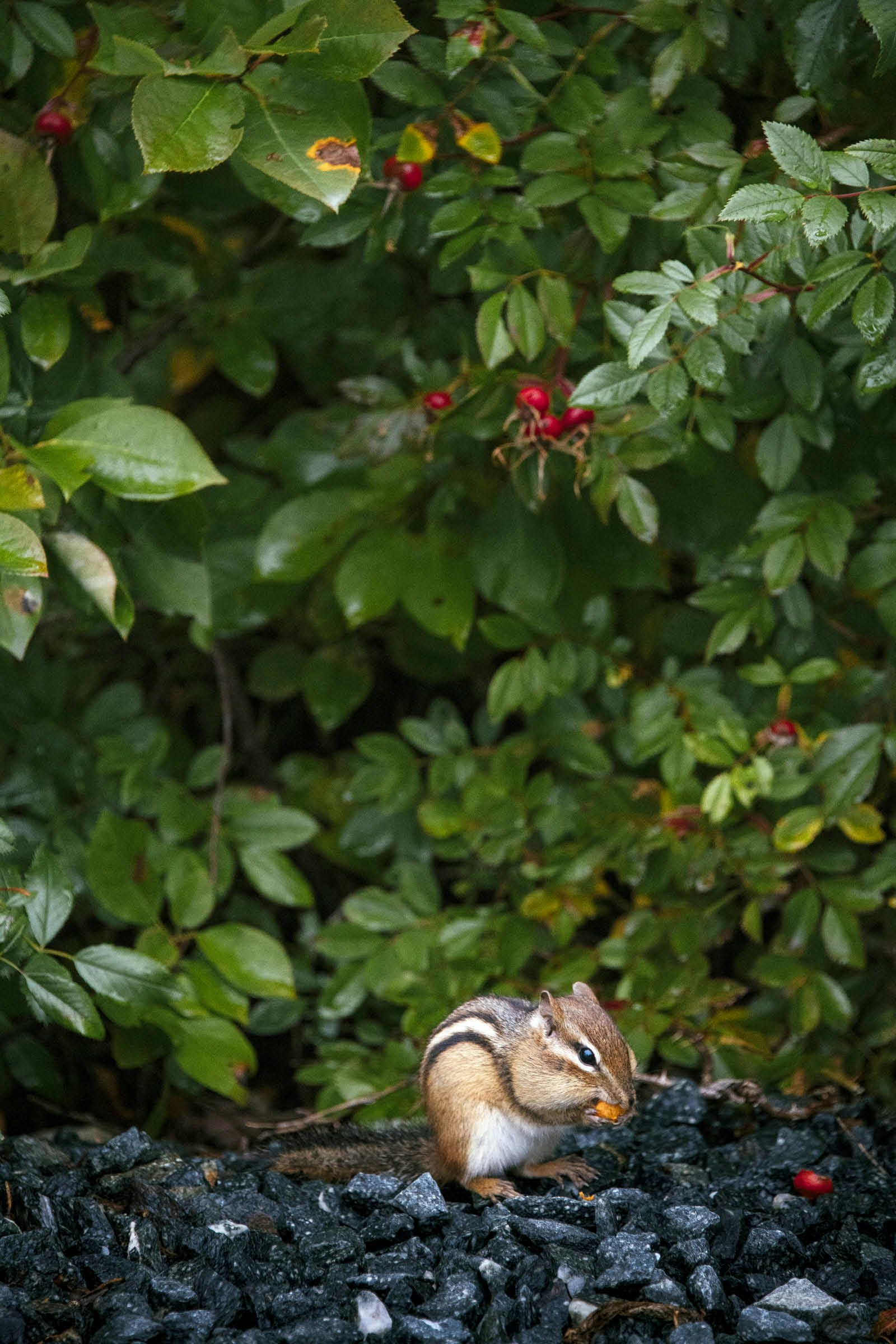
Karen has been here more than 40 years, watching the seasons change. ‘I moved here in 1978,’ she says. ‘And I knew I’d found my place. It offers comfort, as well as adventure.’ As a naturalist, she has 38,000 acres, with 60 miles of coastline to explore, right in her backyard. South, down the road, is Sand Beach, one of her favourite places. It’s a deeply sheltered inlet with two peninsulas like long fingers going out into the Atlantic — ‘a pocket beach,’ she calls it. As we walk along the shore, the air is scented with salt, crustacean and seaweed. A fine mist is spewing, the breath of the ocean, the sky or both. Globs of kelp are strewn out like the dark snaky tresses of mermaids.
To wit, the ‘sand’ at Sand Beach is 80 per cent shell, Karen says. She unfolds a magnifying glass that hangs on her neck, scoops a palmful, and brings it up close to her face, her right eye peering through the lens. ‘I see mussel shells, sea urchin spines, sand dollars and crab shells,’ she says. This is the eye of someone who has spent four decades looking, already a kind of magnified. ‘Oh, and there’s periwinkle shell, and quartz and feldspar,’ she adds. ‘The whole microcosm of the ocean in my hand.’
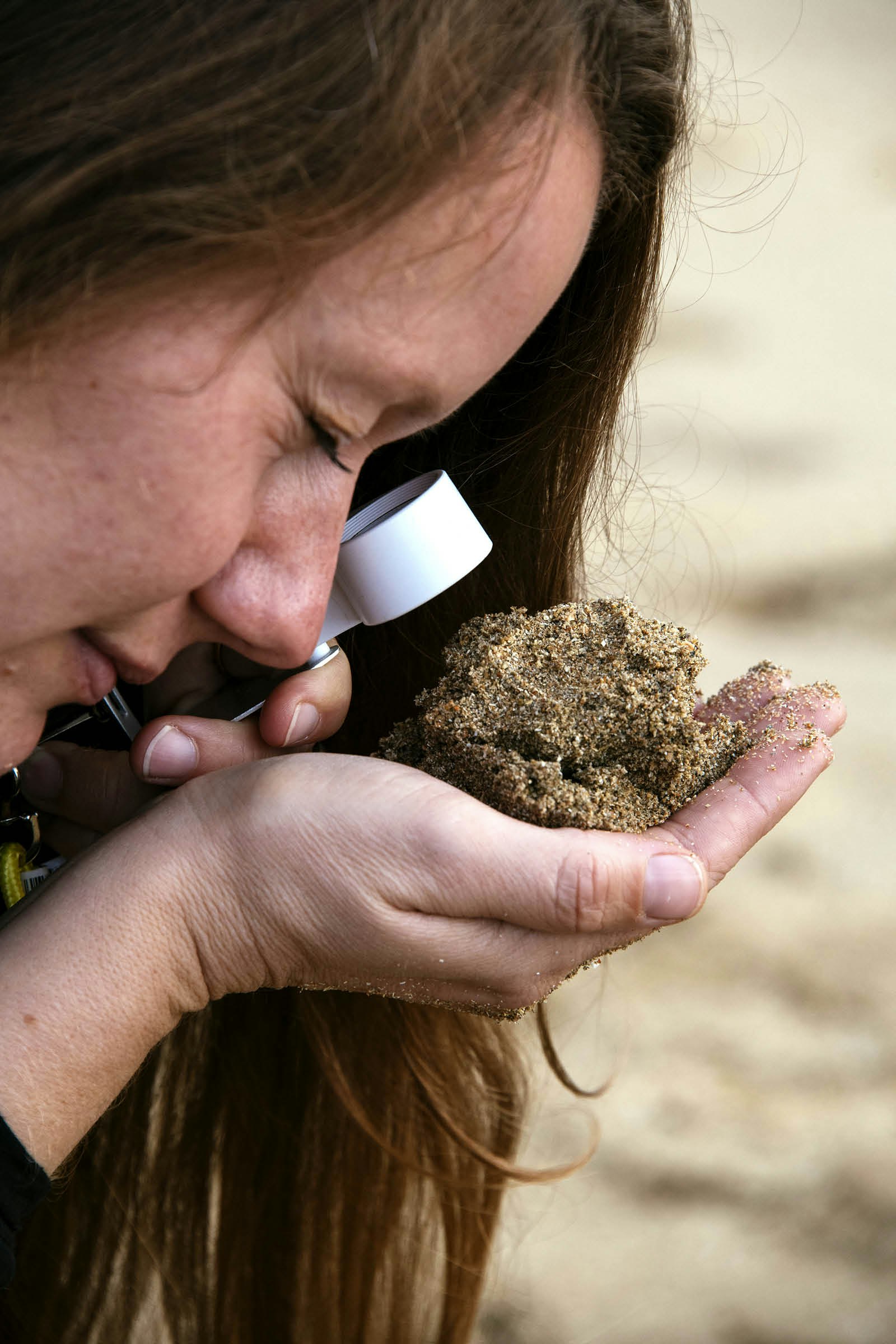
To Karen these grains are precious fragments of the living world, on which sunlight is fading for another day. It will return in the morning to Cadillac Mountain, just north of here – Acadia’s highest peak and the first place on the continent to see sunrise. The light will touch the crowns of the spruces, the birds will begin to sing, the tide will wash out, and the day’s cycle will begin again.
Stay In Bar Harbor, West Street Hotel is a cosy base from which to explore both Acadia National Park and the town’s bars and restaurants. Guests sit by the fireplace in the lounge, spreading out maps on coffee tables to make hiking plans. You can walk out of the door into the park, and the spa is a great place to recover after a day on the trails. There’s also a rooftop pool.
Tour Head out with Captain Tony and his first mate, Jen, whose tours take guests into Frenchman Bay on a working lobster boat to haul up traps, while the crew share tales of the trade. As well as crustaceans, you might get to spot bald eagles perching on the rocks at Egg Rock Island, and grey seals lazing and bobbing in the waves.
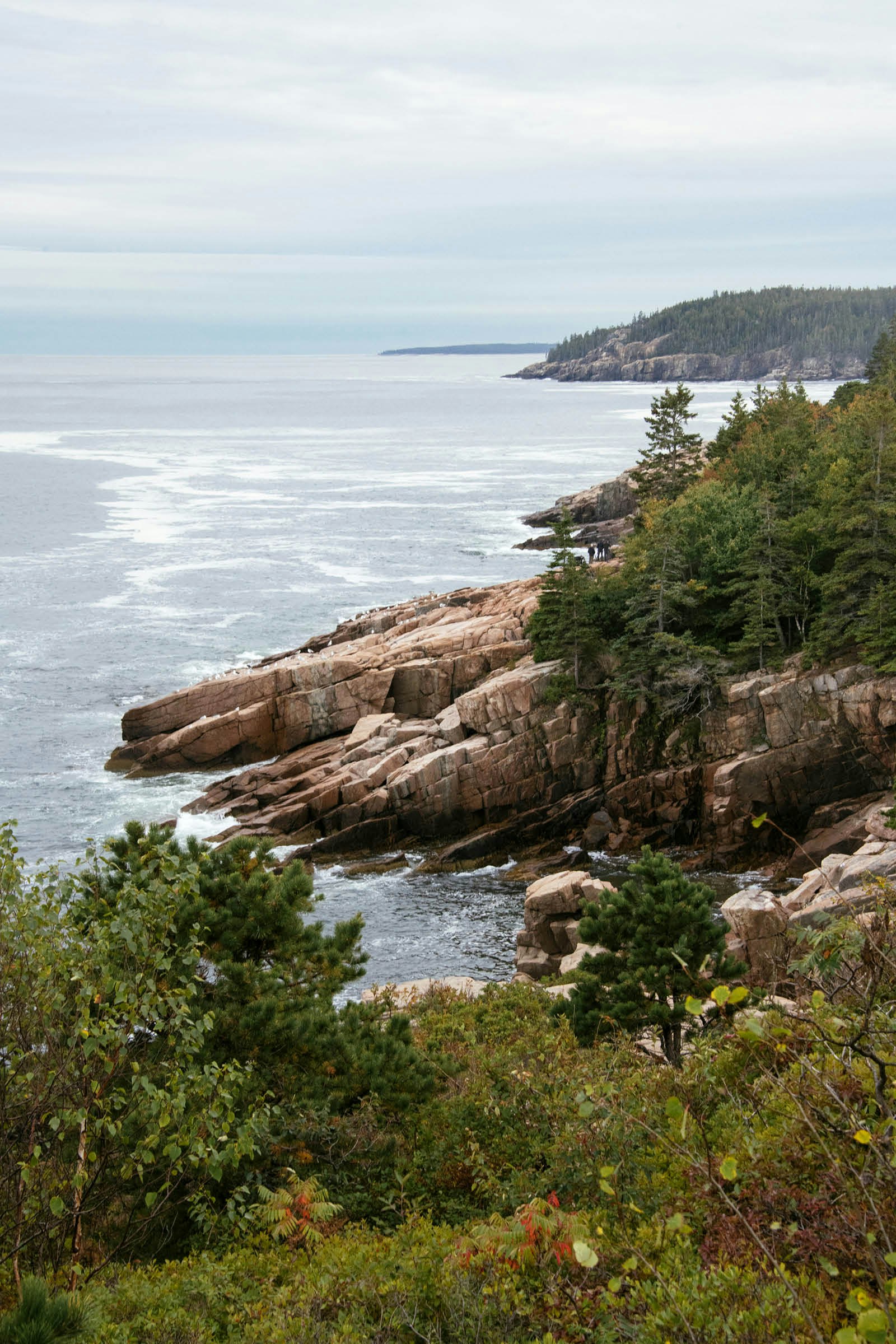
Travel in coastal Maine
Portland Airport has connections with major cities in the eastern USA. Boston (the closest airport with many international flights) is under two hours’ drive from Portland. If you’re starting at Portland Airport, pick up a rental car and give yourself a couple of days to explore the city. Head northeast along the coast, crossing estuaries and rivers for 78 miles, to get to Rockland. Enjoy the ceaselessly lovely scenery, small towns and roadside lobster shacks as you skip ten miles further north to Camden. From there, you’ll hug the shoreline of Penobscot Bay for 72 miles more as it turns to forest, until you make your way to Mount Desert Island, your northeasternmost destination. You may find you make detours for Penobscot basketry shops, antique malls and ocean views, so allow time to enjoy the journeys between destinations.
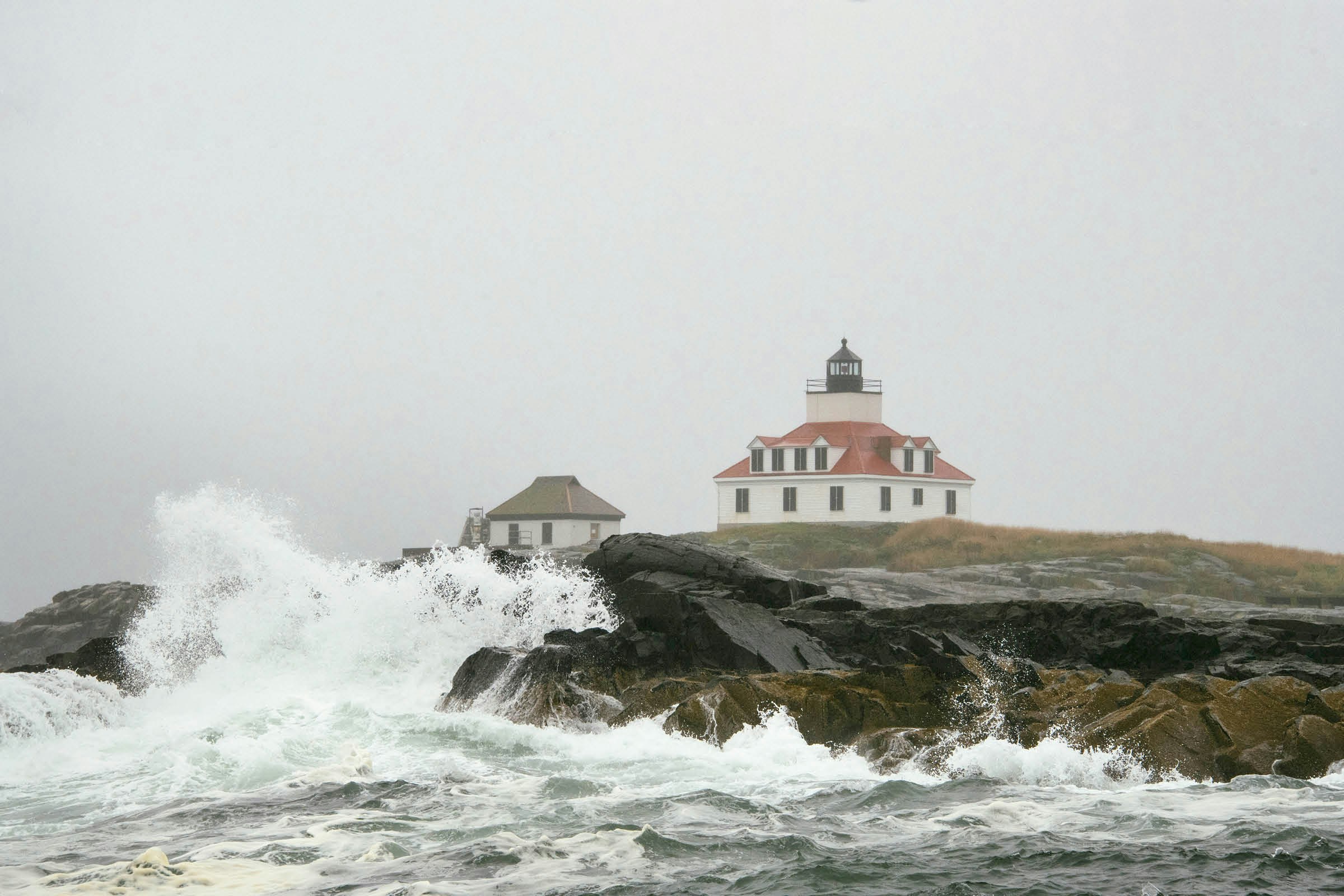
When to visit coastal Maine
During July and August hordes of East Coast urbanites pour from their cities of residence toward the shoreline of Maine, and along its inland lakes and rivers, pushing up airfares into the region. By mid-autumn the crowds have subsided, prices have dropped, and year-round residents will welcome you into their regular rhythms. Winters in Maine are famous for snow and cold temperatures, so unless you go equipped with four-wheel drive and cross-country skis, avoid the months after frost. Spring is slow to thaw out, but when it does, around mid-April or May, it’s a good time to see the whales migrating. Then, the campgrounds at Acadia open and the apple trees begin to blossom.
Holly Haworth travelled to Maine with support from the Maine Office of Tourism. Lonely Planet contributors do no accept freebies in exchange for positive coverage.
